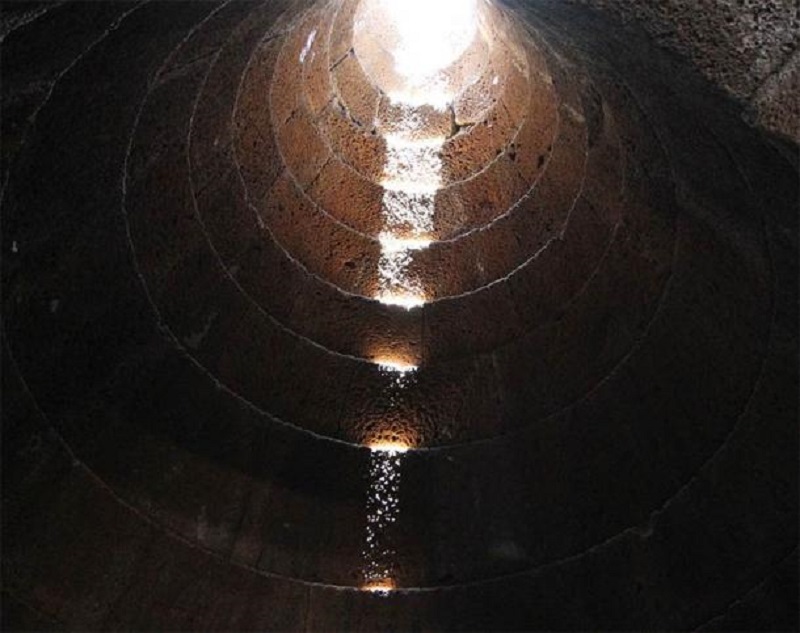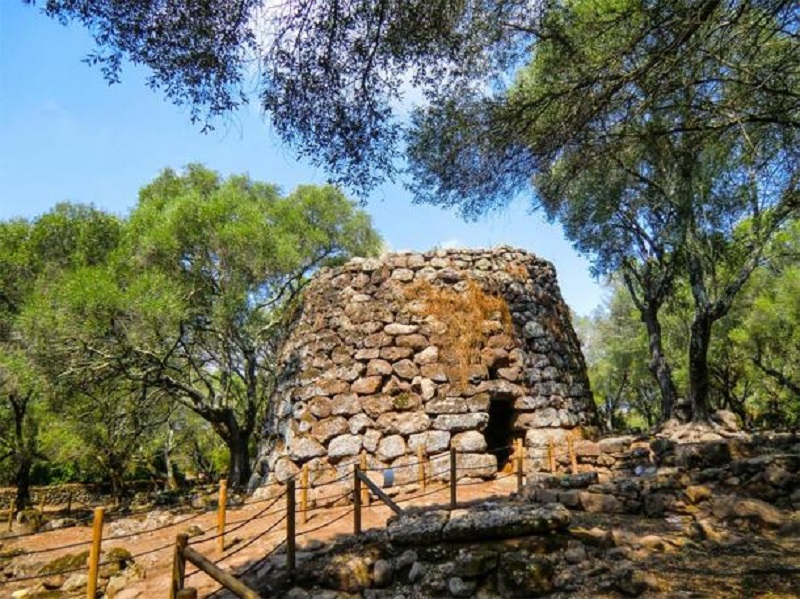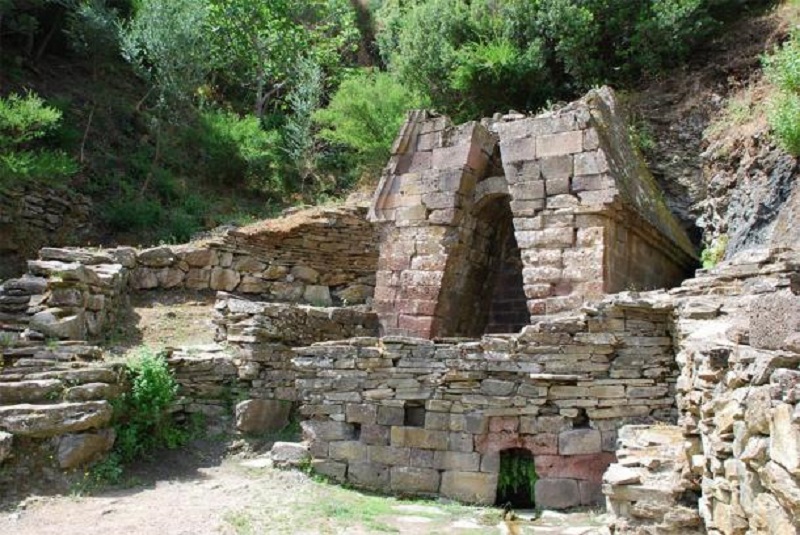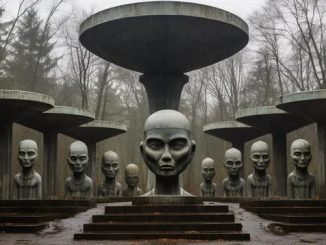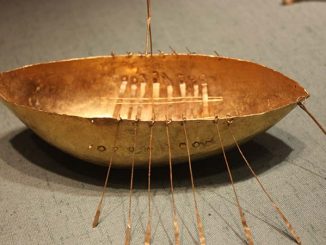The Well of Santa Cristina is an ancient structure located on the Italian island of Sardinia. The name of the structure is somewhat misleading. Although associated with a Christian saint, this well has little to do with the Christian faith. In fact, it was built in the Bronze Age, long before Christianity appeared. Additionally, the Well of Santa Cristina was not used exactly as a well, in the sense that water was drawn from it, but as a ceremonial site. While such sacred wells have been found throughout Sardinia, the Well of Santa Cristina is one of the best preserved.
Nuragic culture and Nuraghi monuments in Sardinia
During the Bronze Age, the island of Sardinia was occupied by an ancient people known as the Nuragic culture. It is generally accepted that this culture flourished from about 1800 BC to 238 BC, when Sardinia was invaded by the Romans. The Nuragic culture is shrouded in mystery, partly because they left no important records. The mystery is deepened by the fact that this culture built many monumental stone structures around Sardinia, including sacred wells.
Incidentally, the name given to this culture, i.e. Nuragic, is derived from nuraghe (plural: nuraghi ), which were the most characteristic constructions of this Bronze Age culture. Nuraghe is a stone tower usually built in an architectural style known as cyclopic. This style involves the use of roughly cut, overlapping polygonal stones. In some cases, mud and mortar were found inside the nuraghi, suggesting that these materials may have been used to hold the stone blocks together and to stabilize the tower. However, other nuraghi are made in an isometric style. This involved using uniformly cut stone in the construction of the towers.
Although the exact number of nuraghi in Sardinia is unknown, it is certain that they numbered in the thousands. For example, one source says there were at least 7,000 stone towers of this type on the island, while another source says there were at least 8,000. This large number of monumental stone towers is a sign that the people of the Nuragic culture were master architects and builders. However, Nuraghi were not the only type of building built by the Nuragic culture.
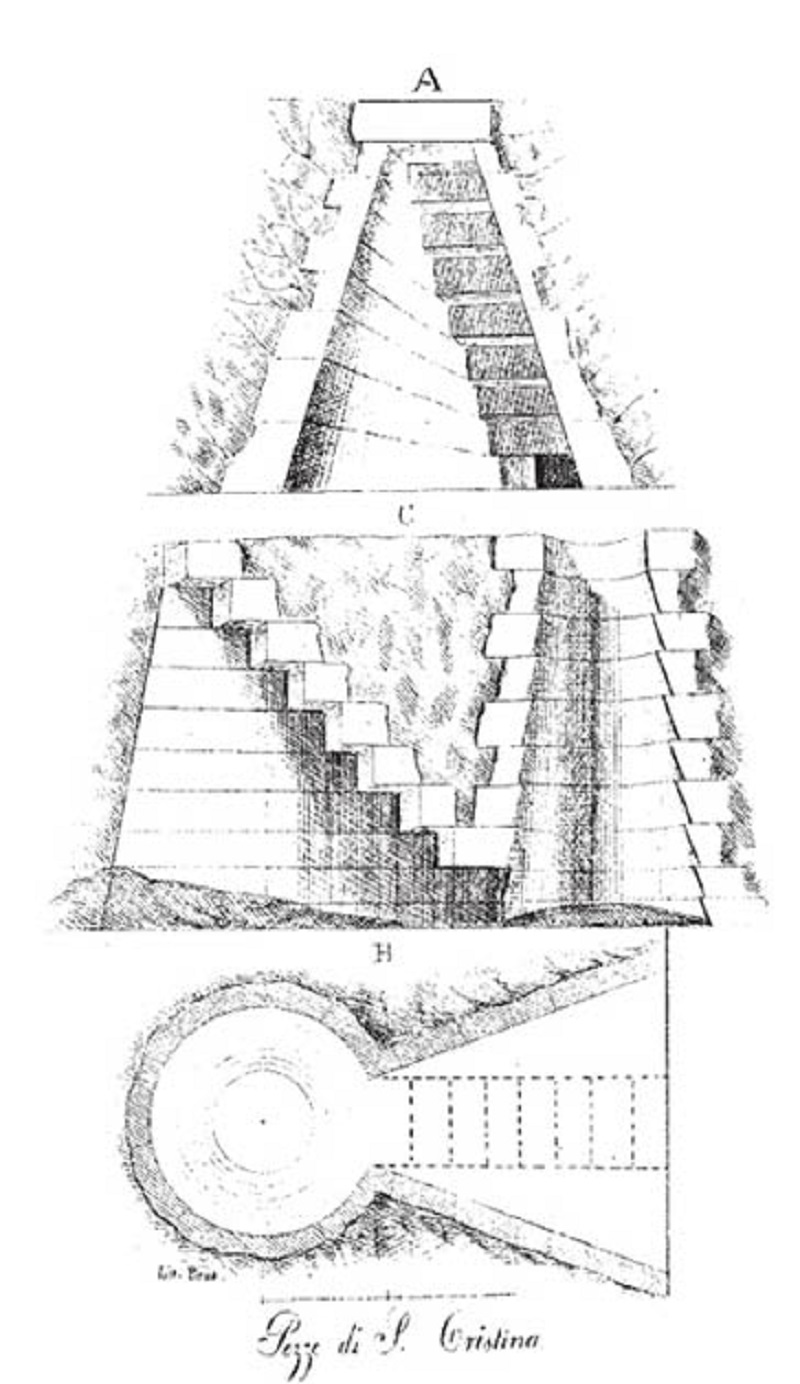
1857 diagram of the Santa Cristina Well in Sardinia.(Aga Khan / CC BY-SA 3.0 )
Sacred well of Nuragic culture
The Sacred Well, although less famous than the Nuraghi, are also fine examples of the building skills of the Nuragic culture. The number of these Nuragic sacred wells is much less than the more famous towers. Currently, approximately 50 of these wells have been identified. The most iconic and best preserved of these statues is at Santa Cristina Well. This Nuragic well is located near the municipality of Paulilatino, western Sardinia, Italy.
The Santa Cristina Well got its name because it is located near the Church of Santa Cristina, built between the 11th and 13th centuries. Today, little remains of this medieval church, consisting of part of the apse and 36 muristenes, which functioned as small accommodations for pilgrims. It is interesting that these muristenes are still in use because they continue to welcome pilgrims who come in mid-May to honor Santa Cristina with novenas, and in late October, when they come to honor the saint. Archangel Raphael.
The Santa Cristina Well is a wonderful example of Nuragic architecture located in Paulilatino, Sardinia. Source: mural / Adobe Stock
What do we know about Santa Cristina Well?
The well of Santa Cristina is much older than this rural church and dates to around the 11th century BC. Visually, the well is surrounded by two temenes (singular: temenos), the first being an elliptical casing. This enclosure was made of stone and most likely served as a barrier between the sacred space within it and the profane space outside it. This elliptical temenos surrounds a second, lock-shaped temenos. Inside this second temenos is the entrance to the well.
The entrance is trapezoidal in shape, connected to the bottom of the well by a staircase. The stones used to construct entrances and stairs are quite different from those of temene. For example, the connecting walls are 7 meters (23 ft) thick. In addition, it is not difficult to see that the surface of these stones is very smooth and perfectly square. It seems that the entrance and stairs were made not too far ago, not too long ago during the Bronze Age.
Decoding the meaning of water in Nuragic culture
The exquisite workmanship of the stones is not the only impressive feature of the Santa Cristina Well. At the end of the stairs is an underground compartment where water is stored. This underground chamber rises in a conical shape ( tholos , or false dome), ending in an opening just above the well. However, it is speculated that the sacred well was originally covered when it was used by the Nuragic people. This is based on the example of another sacred well, Su Tempiesu, located not far from Orune.
The water in the sacred well is taken from an underground spring, brought into the room by a tank dug into the stone floor. Connecting this tank to a stream means that the water level in the chamber will remain constant throughout the year. One interpretation of the well, based on the presence of water, is that it was dedicated to water worship. It is also said that, like the Medieval Church of Santa Cristina, the ancient well attracted Nuragic pilgrims from all over the island.
Unfortunately, not much is known for certain about the rituals that the ancient Nuragic people may have performed in the sacred well. However, scholars have found that fertility symbols played an important role in Nuragic religion, and that they had a water cult that evoked various feminine aspects of God.
The underground chamber rises in the shape of a cone, or tholos. (Carlo Pelagalli / CC BY-SA 3.0 )
Equinoxes and Lunistice: Is it an astronomical observatory?
Although some associate the Santa Cristina Well with Nuragic water worship, others believe the well was once used as a type of astronomical observatory. This idea was first proposed by Arnold Lebeuf, a professor at the Jagiellonian University in Cracow, Poland. It has been shown that during the spring and autumn equinoxes, the Sun will be perpendicular to the opening of the well, thus allowing its rays to enter the underground chamber through this opening. While most sources claim that the phenomenon can still be seen today, one source states that this was only seen in the past, when “the Earth’s axis was tilted and Rigel Kent (was even called Alfa Centauri, the system’s closest star) is seen. from the island.”
Additionally, it was discovered that an astronomical phenomenon related to the Moon could be observed at Santa Cristina Well. At the lunation (also known as the lunation and similar to the solstice), the Moon will be perpendicular to the opening of the well, illuminating the room with its reflection in the water. This phenomenon is said to occur every 18.5 years, the last time being in 2006.
It is not entirely clear whether the ancient Nuragic builders had these astronomical observations in mind when they constructed the Well of Santa Cristina, leading to the suggestion that the Sun and Moon were aligned with the expansion of the tholos , during the spring and fall equinoxes. and lunistice respectively, is just a coincidence. Indeed, without much evidence at the site or any written records supporting either view, it’s hard to say which is correct.
Just 200 meters away is Santa Cristina Nuraghe, a single tower covered by an intact dome. (Angelo Calvino/Adobe Stock)
Capanna delle riunioni and Santa Cristina Nuraghe
Although the Santa Cristina Well is the highlight of the archaeological site, other Nuragic elements in the vicinity should also be explored. In the area outside the sacred precinct, archaeologists discovered the ruins of the Nuragic settlement. The most mysterious of these ruins in the settlement is the so-called Capanna delle riunioni (meaning “meeting hut”).
The meeting hut was a circular building with seating around the walls. The hut is 10 meters (32.8 ft) in diameter, is paved with cobblestones, and has dozens of other rooms connected to it. It is speculated that these rooms may have been used as shops, serving the needs of pilgrims to the sacred well. Additionally, it has been suggested that these rooms were the homes of priests who performed rituals at the well.
About 200 meters (656 ft) from Santa Cristina Well and the Nuragic settlement is a nuraghe, called Santa Cristina Nuraghe. It is a simple circular single tower, 6 meters (19.7 ft) high and 13 meters (42.7 ft) in diameter. The tower consists of a main room accessed by a short hallway. This chamber is covered by an intact dome and has three sub-panels attached to it. Santa Cristina Nuraghe was once surrounded by a large village, the ruins of which can still be seen today. This village was originally inhabited by the Nuragic culture. Later, people from other cultures replaced the original inhabitants of the village.
There are about fifty sacred wells of the Nuragic culture on the island of Sardinia. One of them is Su Tempiesu near Orune, which is said to have functioned as a votive well. ( Wolfgang Cibura / Adobe Stock)
What about the other sacred wells of the Nuragic culture?
Although the Santa Cristina Well is the best example of a Nuragic sacred well, it is not the only one. As mentioned earlier, about 50 of these wells have been identified around Sardinia. Some notable wells include Su Tempiesu, Sa Testa and Predio Canopoli.
The first of these three wells is located near Orune, in eastern Sardinia. This well rests against a rock face and is “the only surviving original evidence of a covered sacred well structure built on an elevation.” This temple has a height of 7 meters (23 ft), including a vestibule, stairs and a chamber to protect the spring water.
The well’s canopy/roof is said to be its most impressive feature, and forms a “double pitched roof with double sculpted eaves”, culminating in a triangular tympanum. In the past, the roof was covered with an acroterion, supporting twenty votive bronze swords. These weapons are decorated and have holes intentionally made in them. Other bronze offerings, including figurines, daggers, rings and pendants have also been found. The presence of these artefacts at Su Tempiesu reinforces the idea that the site functioned as a well.
The remaining two wells, Sa Testa and Predio Canopoli, more closely resemble the Santa Cristina Well. The former is located near Olbia, while the latter is located near Perfugas, in the northeast and north of the island respectively. Sa Testa is located between a pair of hills and votive offerings have also been found there, while Predio Canopoli, like the Well of Santa Cristina, is famous for its perfectly square and smooth stones.
Another notable aspect of the sacred well at Predio Canopoli is that it is located next to a megaron-style temple. In ancient Greece, a megaron was a great hall in a palace complex and it is speculated that this architectural feature was introduced into the Nuragic culture by Greek or Phoenician settlers. Incidentally, there is no mention of any astronomical phenomena occurring at either of these sacred wells or at Su Tempiesu.
Finally, it can be said that the numerous sacred wells throughout Sardinia are a sign of the important role that water plays in the lives of the Nuragic people. The importance of water becomes clearer when one considers Sardinia’s arid landscape. Therefore, for the Nuragic culture, water was associated with divinity. Although the Nuragic culture eventually became extinct, it seems that their water cult continued to exist and was adopted by those who occupied Sardinia after them. This is clearly shown by the finds of Roman votive offerings at some of these ancient sacred wells. Even as water worship died out, perhaps with the arrival of Christianity, the stone structures themselves have survived to this day, serving as a reminder that the Nuragic people were great architects and builders, and perhaps, even astronomers.

